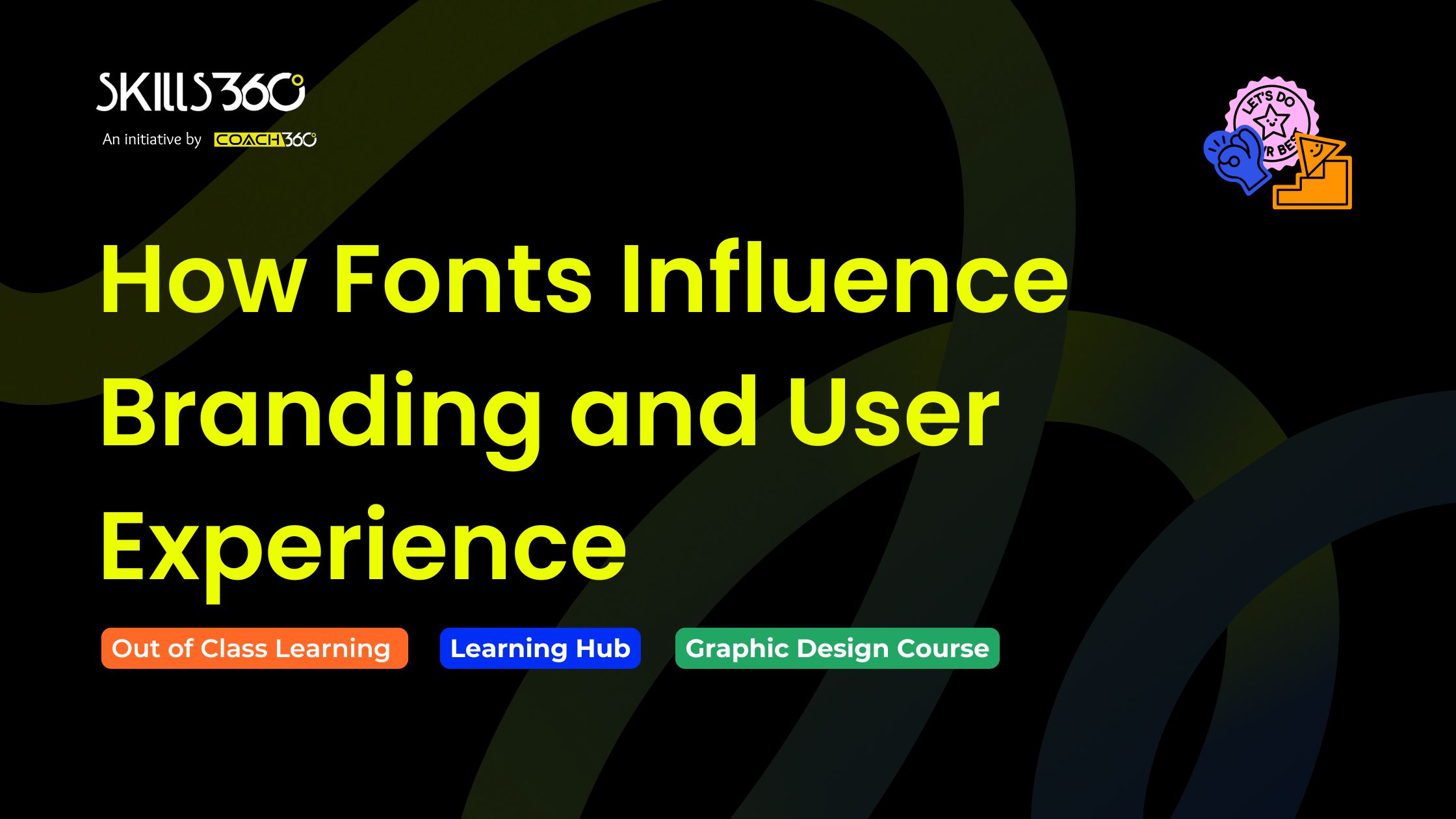- Featured article
- People at Skills360 07 - Apr 2025 | 10 min read

There’s so much more to typography than just arranging letters on a page or deciding which font looks good. It’s a tool that evokes emotions and shapes brand identity, just like color psychology. Here’s why at Skills360, we recommend our students to study in depth about why typography matters and how it works.
As a graphic designer, creating and maintaining brand personality should be your number one priority. Typography helps with that. The right choice of typeface can make a brand feel trustworthy, luxurious, or playful, while a poor one can create confusion or disengagement.
Similarly, topography also encourages consistency in branding. When a brand uses a distinct font for their logos, websites, advertisements, and packaging, it builds familiarity and trust. Changing fonts too often can dilute a brand’s identity, and make it harder for consumers to recognize and remember it. That is why Coca-Cola always uses the iconic script font while Apple opts for San Francisco typeface.
Most fonts carry their own personalities. This is similar to how yellow portrays optimism while red portrays urgency. Before choosing the font for your branding content, you must understand what font conveys what message or personality. There are four main types of font categories:
Serif fonts, with their decorative strokes, convey tradition and elegance and are an ideal choice for print and luxury branding. Sans-serif fonts exude clean, modern simplicity and are perfect for digital interfaces and corporate designs. Script fonts mimic handwriting, adding personality and elegance to logos and invitations, while display fonts are bold and stylized, best for attention-grabbing headlines.
The effects of typography go beyond aesthetics. Let's be honest, nobody enjoys squinting at tiny, cramped text or trying to figure out fancy script fonts on a website. The fonts you choose directly impact how people interact with your designs. Good typography feels effortless. It offers a comfortable reading experience where the words flow naturally, the spacing feels just right, and readers don't even notice the font; they just absorb the content. But that doesn't mean you choose a very simple to read, plain font for your designs. The key is to strike that perfect balance between style and substance.
Typography is a silent yet powerful tool in design. The right fonts can strengthen branding, enhance user experience, and create lasting impressions. As a graphic designer, mastering typography can allow you to create visually compelling and functional designs that resonate with audiences. If you would like to learn more about typography, color psychology and more, join our graphic designing course at Skills360.


Get curated emails on out of class learning and work on your skills on your free time.